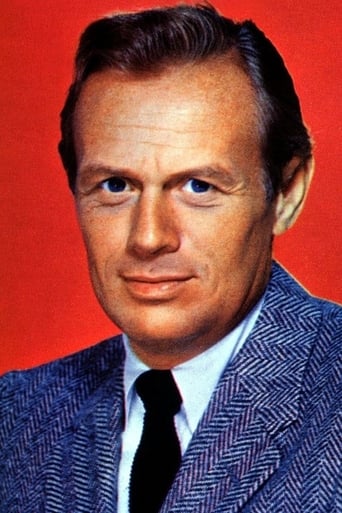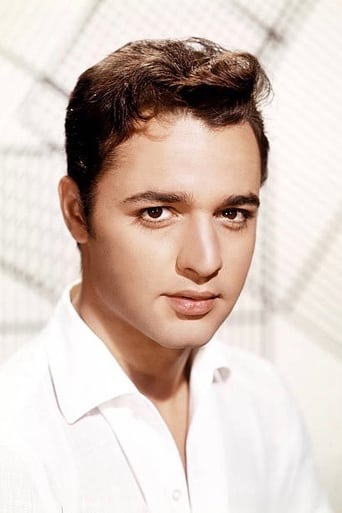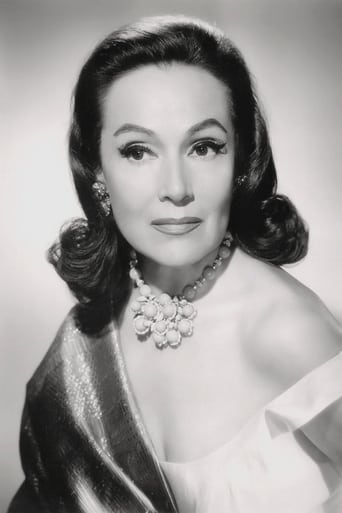Tedfoldol
everything you have heard about this movie is true.
Sharkflei
Your blood may run cold, but you now find yourself pinioned to the story.
Motompa
Go in cold, and you're likely to emerge with your blood boiling. This has to be seen to be believed.
Stephan Hammond
It is an exhilarating, distressing, funny and profound film, with one of the more memorable film scores in years,
tomltd
This may be John Ford's worse movie. Weak script. Mediocre acting. Miscast.
35541m
Cheyenne Autumn was intended as the big-budget western release of 1964, the follow-up to How the West Was Won with several of the same cast members and one of that film's directors. For a movie made in 1963, the theme is a bold one about the White man's ill-treatment of the Cheyenne (actually the North Cheyenne tribe) and their 1878 journey back north to their homeland.Unfortunately, the film is a mess and for a movie made by a top 'A' director, it is surprisingly incompetently directed. Some comments:the Dodge City sequence. I would have liked to see this expanded to a feature length film and released separately. It is very funny. However, it doesn't belong in this film. What was Ford smoking when he put this in? Karl Malden's prototype Nazi officer who has "Orders, orders zat must be OBEYED". "I HAF ORDERS". Malden seems to think he is auditioning for John Cleese's role in The Germans episode of Fawlty Towers. Couldn't someone keep him under control? And what about that huge pipe he pulls out of his coat at one point and then exits stage left after blowing out the sergeant's offered match? That made me laugh. A touch worthy of Peter Sellers. One can see the point being made but the execution is ridiculous. It was also amusing to see the German name of Edward G Robinson's character being downplayed presumably because the writers had forgotten that one of the major 'good guys' was also of German ancestry when they created the Nazi character. (interesting historical footnote - the real Carl Schurz spoke with a thick German accent whereas the real Cpt Wessels was born in New York and likely didn't - he certainly was never a Prussian officer) in the first encounter between the cavalry and the Indians, Richard Widmark is summarily court martialled and put under arrest for reasons not apparent to this viewer (was something cut out?). Later Widmark goes up to a soldier and asks where the major is only for the soldier to point to a body which is virtually lying at Widmark's feet being attended to by a physician. This is like something out of The Naked Gun. I had to rewind here to check I hadn't missed anything as it looked so stupid.the second skirmish with the Indians is appallingly choreographed and edited. After establishing that we are in some kind of shrub/semi-desert area, when Pat Wayne leads a cavalry charge, the cavalry are shown charging over some flat sandy area which is obviously a completely different location. Then, the Indians set fire to a few fake-looking shrubs and about five seconds later, the cavalry's wagons and cannon are enveloped in flames despite being at least several hundred yards away. Richard Widmark and the rest of his command appear to be doing nothing whilst this happens although Wayne's men seem to be close enough for Widmark to be shouting at them. A quick cut and Widmark is personally helping save the cannon - what has happened to the hundred odd men in his command. Why aren't they helping? Who knows.Ricardo Montalban and Gilbert Roland's mullets. Very silly and must have given the set hairdresser lots of chuckles. Didn't anyone look at any pictures of the real Dull Knife and Little Wolf? Still, at least even they don't look as ridiculous as Sal Mineo.Surely someone must have realised that it sounded stupid to constantly refer to a major character as "Spanish Woman" rather than give her a proper name? There is no excuse for this as it's not even a real historical name.What did make me laugh was that most of the time it looked as if Little Wolf and Dull Knife's orders to the tribe were having to be translated for them by the elderly unnamed Cheyenne who was standing next to them in many scenes and was a real Indian (a senior Navajo I'm guessing). Almost every time they said something in Cheyenne, this guy would then turn round and repeat it to the other Indians. This again looked ridiculous Matters being brought to what seemed a premature conclusion by Edward G Robinson standing infront of an appallingly unconvincing piece of back-projection, not even pointed in the right direction, and mouthing a few platitudes. Had the money run out at this point? (the Robinson scene is completely fictitious by the way).In short, worthy in intent but incompetent in execution and in places mind-numbingly bad for an expensive film made by a talented director.
Spikeopath
Cheyenne Autumn is directed by John Ford and is a "Hollywood" telling of the Northern Cheyenne Exodus of 1877/9, where the Northern Cheyenne, fed up with lack of food and poor facilities, tried to return to their one time home in the North after having been located in the Southern Reservation by the United States Army. It stars Richard Widmark, Caroll Baker, Dolores del Rio, Karl Malden, Gilbert Roland, Ricardo Montalban, Edward G. Robinson, James Stewart and Arthur Kennedy. Music is scored by Alex North and cinematography by William H. Clothier. It is photographed in Super Panavision 70, in various Utah locations, predominantly Monument Valley.Does it ever matter who fired the first shot?John "Pappy" Ford's penultimate film, and his last Western, is epic in scope and production and seen as an honest attempt to redress the balance for years of misrepresentation of Native Americans in Hollywood, though not necessarily his own since he, I believe, isn't on record as saying that to be the case? Thematically it's important and doesn't back off from being sympathetic to the Cheyenne's plight, we root for them and rightly so. Yet it always feels like a film shot through the vision of a white man's eyes, you find yourself wanting more from the Cheyenne perspective, for them to dominate the narrative. It would have been nice to know some of the big players involved in the heroic and tragic trek back to Wyoming. It's also annoying that Ford or the studio chose to interrupt the flow of the story with the pointless light relief section at Dodge City. Which comes across as just an excuse for James Stewart and Arthur Kennedy to play Wyatt Earp & Doc Holliday respectively. And sadly, they are not very successful in doing so either.As has been noted by many critics over the years, the film ultimately rounds out as an honourable misfire from the great John Ford. The cast, away from the loud and brash Dodge City collective, are mostly fine. Widmark proves to be a watchable axis as the reluctant Captain tasked with returning the Cheyenne to the barren reservation. Baker does a nice line in sexy Quaker, Robinson adds a touch of class late in the day, while Montalban & Roland are excellent as Cheyenne chiefs Little Wolf & Dull Knife respectively. But all pale in the shadow of Clothier's magnificent photography, stunning vistas that dominate the screen, the colours so rich and splendid, Monument Valley an iconic character of nature observing the Cheyenne desperately trying to get back to home comforts.It's unmistakably a John Ford picture, with some inspired filming techniques, but the heart of the story is lost due to a too long run time, a daft mid point sequence and much extraneous nonsense. 6/10
dglink
Unfortunately, given the subject matter and the director, "Cheyenne Autumn" fails to achieve the greatness of its aspirations. Injustice to Native Americans has along tragic history, and the topic deserved a soaring film that brought those crimes to a broad audience. After years of depicting Native Americans as the villains, John Ford was certainly the right director to cast a sympathetic eye on their plight, and the film has many grand sequences that are reminiscent of Ford's finest westerns. The brilliant camera work of William Clothier captures the majesty of Monument Valley and often bathes the mountains and characters in the warm glow of sunsets.For some reason, Ford felt that Latino actors were appropriate for the roles of Native Americans, and Ricardo Montalban, Gilbert Roland, and Dolores del Rio do achieve a measure of dignity as members of the long-suffering Cheyenne tribe. While Carroll Baker tries hard as a Quaker woman who accompanies the Cheyenne on an arduous trek back to their homeland, her bleached blonde hair, immaculate make-up, and voice undercut her efforts. The work of composer, Alex North, also sounds out of place. Best known for his scores for "Spartacus" and "Cleopatra," North's music here evokes Roman legions rather than the U.S. cavalry.However, the biggest flaw in the film is a misconceived episode in the middle that features James Stewart, Arthur Kennedy, and John Carradine. As Wyatt Earp and Doc Holliday, Stewart and Kennedy perform a comedy routine that jars with the solemnity of the previous scenes. Indeed, the entire Dodge City sequence is a western comedy, and viewers would be justified in thinking that some film reels were mislabeled and an entire sequence from another film had been inserted accidentally. Whatever dignity and concern was established in the film's first hour are destroyed when the action moves from the Cheyenne to Earp and Dodge City."Cheyenne Autumn" was likely conceived as a follow-up to the successful "How the West Was Won." John Ford was one of the directors of that Cinerama film; Carroll Baker, Karl Malden, James Stewart, and Richard Widmark are featured in both films; and the ads for the two westerns are strikingly similar. Widmark anchors "Cheyenne Autumn" and provides a narration much as Spencer Tracey did for "How the West Was Won." However, the earlier movie was a rousing adventure with a great score and an uplifting theme of westward expansion. Despite an overture and intermission, "Cheyenne Autumn" is a small, sober tale of racial injustice that has been stretched out and embellished with a jarring music score and a schizophrenic mix of comedy and tragedy that lays waste to some fine epic moments.






